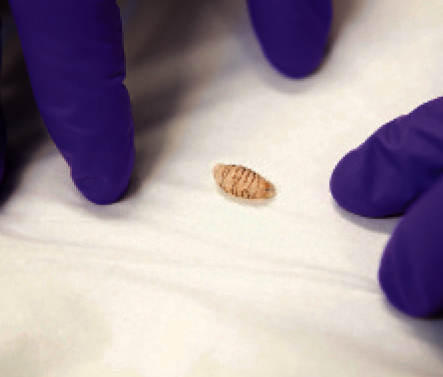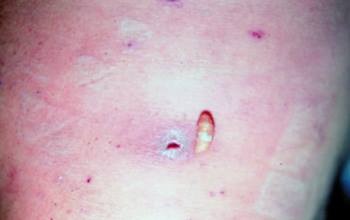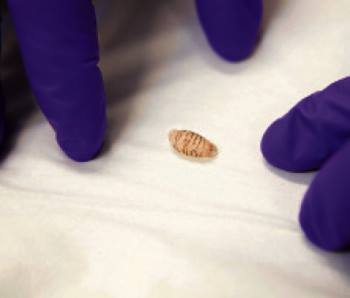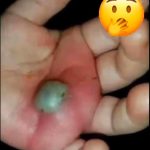Cutaneous myiasis is a parasitic infestation of the skin caused by the larvae (worms) of certain species of flies.
Parasites are microorganisms that live on or within another organism (the host) and that depend on that host for food and life. Some species of flies lay their eggs on other insects or on objects that can come into contact with people’s skin. Some flies lay their eggs in or near a wound or sore. The eggs hatch and hatch into larvae, which are parasites that can burrow through the skin.
There are three main types of fly larval skin infestation:
- Furuncular myiasis (similar to a comedo or boil)
- Wound myiasis
- Migratory myiasis
Solitary worm (larva)

Hide details © Springer Science + Business Media
Signs and symptoms vary depending on the species of fly causing it. These infestations generally occur in tropical countries. People who have myiasis in other countries have often recently visited a tropical country.
Furuncular myiasis
Many of the flies that cause furuncular myiasis are known as blowflies. The best-known species of flies that cause furuncular myiasis come from South and Central America, and from sub-Saharan and tropical Africa. Other species come from North America, Europe, and Pakistan. Many of these flies do not lay their eggs on humans, but on other insects (such as mosquitoes) or on objects (such as hanging clothes) that can come into contact with human skin.
The eggs hatch into larvae, which penetrate the skin and develop into mature larvae. These reach a size of about 1.3 to 2.5 cm long, depending on the species. Without treatment, the larvae eventually emerge from the skin and fall to the ground to continue their life cycle.
The usual symptoms of furuncular myiasis are itching, a sensation of movement in the area, and sometimes sharp, stabbing pain. At first, a small red bump appears that looks like a common insect bite or a budding comedo (boil). Then the lump becomes larger and a small opening can be seen in the center, from which a clear, yellowish liquid comes out, and sometimes a small portion of the end of the larva can be seen.
Because the larvae require oxygen, blocking the skin opening can cause them to emerge, or at least move closer to the surface. When they are close to the surface it is easier to remove them. To block the opening of the skin, apply petroleum jelly, nail polish, or even bacon or a tobacco paste. Larvae that die before being removed are more difficult to remove and often cause a severe inflammatory reaction.
Sometimes an anesthetic is injected into the skin, a small incision is made, and the larva is removed with forceps. The drug ivermectin, taken by mouth or applied to the skin, can also kill the larva or cause it to come out.
Wound myiasis
Open wounds, especially in the homeless, alcoholics, and other socially marginalized people, can be infested by fly larvae. The tissues that line the mouth, nose or eyes (mucous membranes) can also become infested. The most common flies are the green or black blowflies. Unlike the larvae (worms) of common house flies, most larvae that cause myiasis in wounds invade both healthy tissue and dead tissue.
The larvae are removed by irrigation of the wounds and extraction of the larvae. Any dead tissue is also removed.Miasis in wounds

This photo shows a larva next to an open wound.
Migratory myiasis
The most common source is flies that normally infest horses and cattle. Infestation occurs by coming into contact with infested animals. Less often, flies lay their eggs directly on humans. The larvae do not stay in one place. They burrow under the skin, causing itchy lesions that can be mistaken for those of migratory cutaneous larvae.
Treatment for migratory myiasis is the same as for furuncular myiasis.


